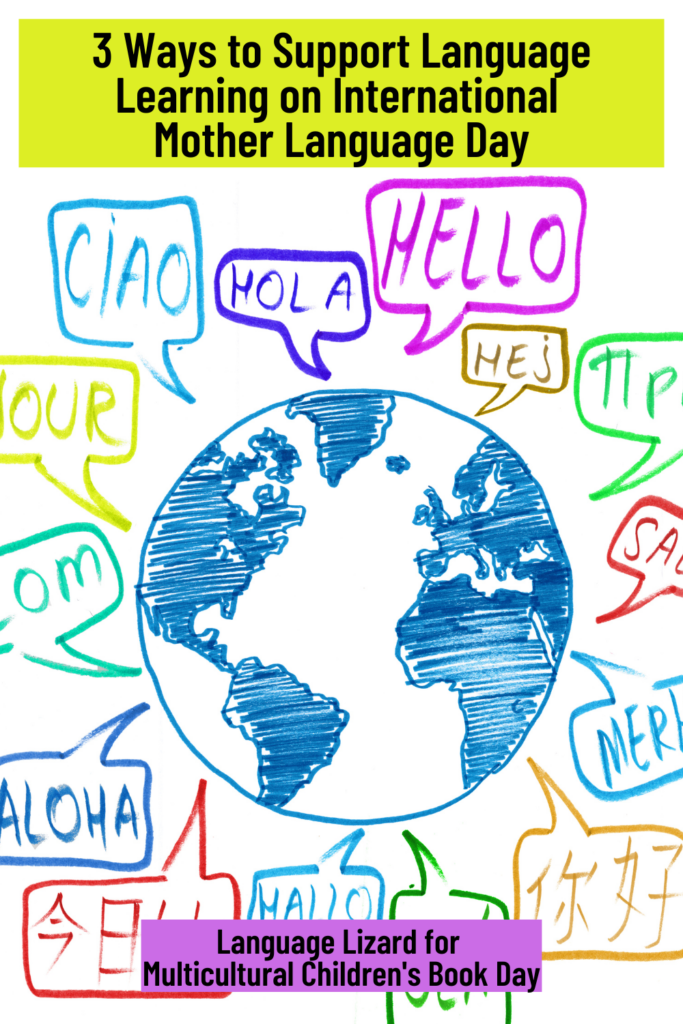International Mother Language Day is celebrated worldwide each February 21. This year’s theme is “multilingual education – a necessity to transform education in a multilingual world.”
Let’s look at its history and ways you can celebrate at home and school!
What is International Mother Language Day?
According to UNESCO (United Nations Educational, Scientific and Cultural Organization), International Mother Language Day is “…an essential platform to promote the importance of cultural and linguistic diversity and multilingualism for peaceful and sustainable societies.”
In 1999, UNESCO proclaimed February 21 as International Mother Language Day, which has been observed worldwide since 2000. The idea for the day arose from the initiative of the Bangladesh. February 21 marks the anniversary of the day when the people of Bangladesh fought for recognition of the Bengali language.
Exploring World Languages
Let’s Read
Choose bilingual books to expose students to the many languages spoken worldwide. (There are approximately 7,151 languages spoken today, according to Ethnologue, an online publication about languages of the world.) If you have bilingual students in the class, ask them to read or invite their parents to come and interact with the class in their mother tongue. Or, have them record a book in their home language to share at school so that other students can see and hear some of the home languages spoken by their classmates, deepening their appreciation for language diversity.
In addition, create a library that reflects all the different languages and cultures spoken in the classroom or school, igniting children’s curiosity to learn about other languages and cultures.
A, B, and C
Expose the class to different alphabets. Because each language is unique, many students aren’t aware that some languages are written with distinct letters, scripts, and characters. Explore how some languages are written with characters, how some text is read from left to right, and how sentence structure can vary from one language to another. Discuss the differences and similarities of the alphabets.
Word Origins
Create a list of popular English words that have been adapted or borrowed from other languages. For example, many of our nautical terms have been adapted from Dutch, such as skipper, buoy, and starboard. Have the students research the origins of different words and discuss how and why they might have been adapted in English.
Guest Post from Language Lizard Platinum Sponsor





